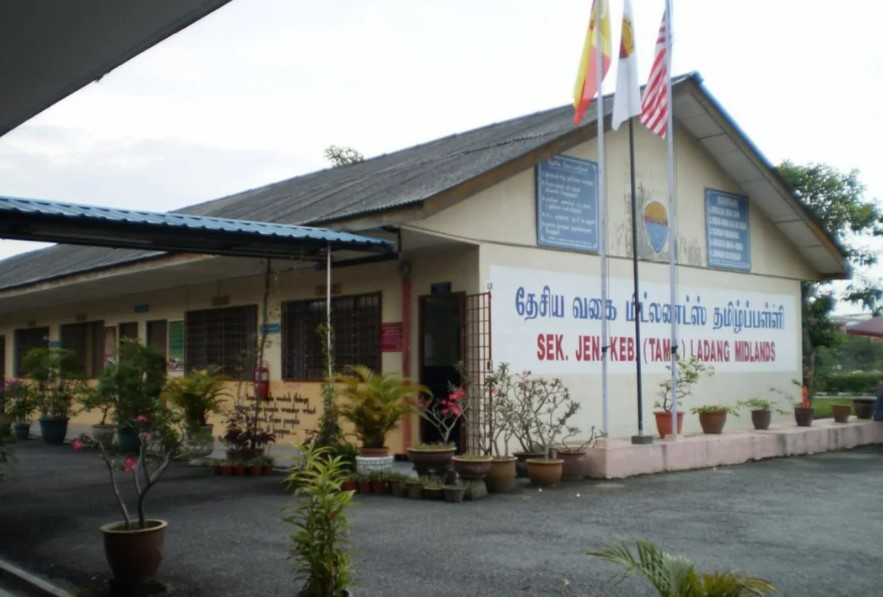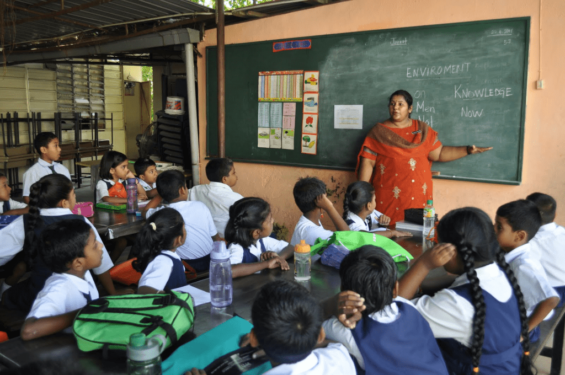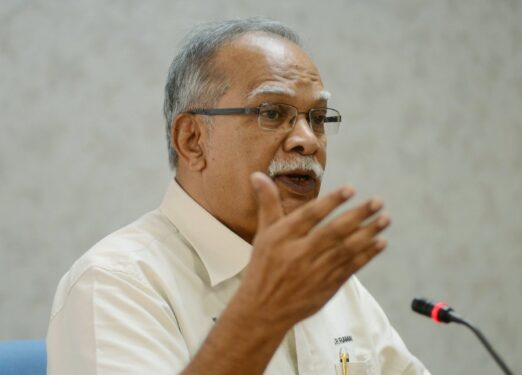
To close down or not low-populated Tamil schools?
By Prof Ramasamy Palanisamy

IN a recent seminar on education and the Indian community, Prime Minister Datuk Seri Anwar Ibrahim advised that it is better to close down micro-Tamil schools with 15 students and below so that funds could be diverted to improving the existing Tamil schools with high enrolment.
He further said that populist attitude towards the preservation of Tamil schools with declining student population might not be in the best interest of the Indian community.
Anwar is partially right in saying that some Tamil schools which are located in estates might become untenable due to low enrolment.
However, before a decision could be made, I suggest that Anwar appoints a high-powered committee – probably one chaired by a senior civil servant or the Education Minister – to look into ways of strengthening the Tamil schools system.
In the last one or two decades, the reduction in the number of Tamil schools has become a major concern of the Indian community.
During the colonial and post-colonial days, the majority of Tamil schools were located in the plantations or estates.
However, with commercialisation and urbanisation, estate lands have been sold for development. As a result, the Indian population which was once predominantly located in estates have moved to urban and semi-urban areas.
The decline of the Indian population in estates over the years have come to pose an enrolment problem in Tamil schools. While the enrolment of Indian students has increased in urban Tamil schools, there has been an opposite effect on schools in estates.
A number of estate Tamil schools in the country face a decline in students. Today, some of these schools have student enrolment ranging from 15 to 50 students. In years to come, these schools stand the chance of dying a natural death.

Pic credit: Wiki Impact
No need to close down
In the 1960s and 1970s, there were more 1,000 Tamil schools in the country. However, attempts at re-grouping the schools and the decline in student population have brought the number of schools to about 526.
If the student enrolment continues to decline, there is high possibility that more schools are expected to be closed down. There is fear that the Indian community that fought hard to preserve the Tamil school’s system might be in for a big disappointment.
So, what needs to be done? It is not that there is no solution to arrest the decline of students in Tamil schools particularly in estates.
Yes, I agree that some schools in the estates particularly those with an enrolment of 15 or less are beyond saving. In fact, over the years a number of schools have been closed down for the lack of numbers.
But unfortunately, the past governments particularly Barisan Nasional (BN) allowed for the natural death of the schools without a parallel initiative to build new schools in urban areas to replace the closed ones.
There was no political will to transfer the licences or permits of the closed down schools to build new schools in urban areas where student enrolment was on the rise.
In the case of the Chinese community, a Chinese school that was closed down in the district of Sri Manjung, Perak had its licence transferred to a new school in Puchong, Selangor.
I am not sure if there might be other cases but Tamil schools with declining enrolment stand the possibility of closure. But at the same time, the permits or licences issued for the schools to be closed down can be transferred to new Tamil school in urban areas.
Why not? SJKT Bednoch, in Kulim was closed down due to the lack of students. There is an on-going attempt to transfer the licence to a new school in Bagan, Butterworth, Penang.
The Penang government has provided a four-acre plot of land for the relocation of the Bednoch Tamil school. The newly formed school committee of the school are waiting for the final approval from the Education Ministry.

There is no need to close down Tamil schools with hardly an enrolment so that existing schools could be improved. The improvement of the existing Tamil schools is the responsibility of the Federal government.
Failure of Federal government
It is predicated on unconditional support on the part of the federal government. It is not that Indian community is not unrealistic about the conditions of some of the Tamil schools in the estates.
Some of schools with declining enrolment cannot be saved at all as the community has moved away. What I am saying that if these schools are closed down, there is an urgent need to re-build new schools in urban areas without sacrificing the licenses that were issued.
In this way, the decline of the Tamil schools could be averted and at the same time mitigate the pressure of high enrolment in urban Tamil schools. It is a kind of win-win situation that will be appreciated by the Indian community.
No need to close down
In the 1960s and 1970s, there were more 1,000 Tamil schools in the country. However, attempts at re-grouping the schools and the decline in student population have brought the number of schools to about 526.
If the student enrolment continues to decline, there is high possibility that more schools are expected to be closed down. There is fear that the Indian community that fought hard to preserve the Tamil school’s system might be in for a big disappointment.
So, what needs to be done? It is not that there is no solution to arrest the decline of students in Tamil schools particularly in estates.
Yes, I agree that some schools in the estates particularly those with an enrolment of 15 or less are beyond saving. In fact, over the years a number of schools have been closed down for the lack of numbers.
But unfortunately, the past governments particularly Barisan Nasional (BN) allowed for the natural death of the schools without a parallel initiative to build new schools in urban areas to replace the closed ones.
There was no political will to transfer the licences or permits of the closed down schools to build new schools in urban areas where student enrolment was on the rise.
In the case of the Chinese community, a Chinese school that was closed down in the district of Sri Manjung, Perak had its licence transferred to a new school in Puchong, Selangor.
I am not sure if there might be other cases but Tamil schools with declining enrolment stand the possibility of closure. But at the same time, the permits or licences issued for the schools to be closed down can be transferred to new Tamil school in urban areas.
Why not? SJKT Bednoch, in Kulim was closed down due to the lack of students. There is an on-going attempt to transfer the licence to a new school in Bagan, Butterworth, Penang.
The Penang government has provided a four-acre plot of land for the relocation of the Bednoch Tamil school. The newly formed school committee of the school are waiting for the final approval from the Education Ministry.

There is no need to close down Tamil schools with hardly an enrolment so that existing schools could be improved. The improvement of the existing Tamil schools is the responsibility of the Federal government.
Failure of Federal government
It is predicated on unconditional support on the part of the federal government. It is not that Indian community is not unrealistic about the conditions of some of the Tamil schools in the estates.
Some of schools with declining enrolment cannot be saved at all as the community has moved away. What I am saying that if these schools are closed down, there is an urgent need to re-build new schools in urban areas without sacrificing the licenses that were issued.
In this way, the decline of the Tamil schools could be averted and at the same time mitigate the pressure of high enrolment in urban Tamil schools. It is a kind of win-win situation that will be appreciated by the Indian community.

Prof Ramasamy Palanisamy
There is no populist or political move on the part of the Indian community in wanting to retain the Tamil schools in areas of low enrolment. It is just that the demographic changes that have brought about the lack of student numbers in estates schools.
If these estate schools cannot be continued, there must be a parallel move to transfer the licences of these schools to be closed to re-establish new schools. Let good sense and fairness prevail in safeguarding the educational interests of the Indian community.
Anwar means well for the multi-ethnic and mulri-religious communities in Malaysia. He has often reiterated the point that Malaysia is the home for all races.
Thus, in this spirit of harmony and unity, I sincerely hope that Anwar can initiate the move to examine the state of the Tamil Schools system in the country. – June 12, 2023
Prof Ramasamy Palanisamy is the state assemblyman for Perai. He is also deputy Chief Minister II of Penang.
There is no populist or political move on the part of the Indian community in wanting to retain the Tamil schools in areas of low enrolment. It is just that the demographic changes that have brought about the lack of student numbers in estates schools.
If these estate schools cannot be continued, there must be a parallel move to transfer the licences of these schools to be closed to re-establish new schools. Let good sense and fairness prevail in safeguarding the educational interests of the Indian community.
Anwar means well for the multi-ethnic and mulri-religious communities in Malaysia. He has often reiterated the point that Malaysia is the home for all races.
Thus, in this spirit of harmony and unity, I sincerely hope that Anwar can initiate the move to examine the state of the Tamil Schools system in the country. – June 12, 2023
Prof Ramasamy Palanisamy is the state assemblyman for Perai. He is also deputy Chief Minister II of Penang.
No comments:
Post a Comment